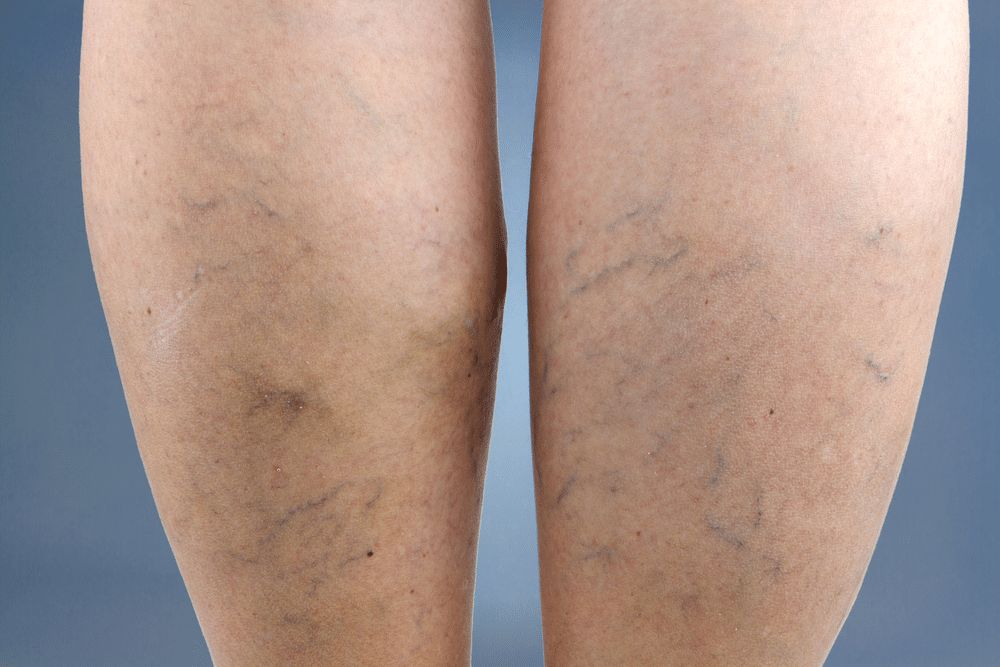Varicose veins make many women feel self-conscious about their appearance. Fortunately, many treatments can be used to reduce or eliminate the appearance of these veins. But what causes varicose veins? Learn more about this benign condition before you schedule your appointment at VENUS Vein Clinic in Omaha, NE.
What Is the Main Cause of Varicose Veins?
Broadly speaking, this condition is caused by increased blood pressure in the legs that makes veins swell and expand. Consistent increased blood pressure in these veins permanently stretches vein walls, which then creates the appearance of bumpy or gnarled veins in the legs. These veins typically occur on the lower leg and can have symptoms such as aching.
There may be some specific contributing factors for developing the same condition. The biggest contributing factor is being a woman since this condition develops in women much more than it does in men. Some specific causes of varicose veins include:
Pregnancy
Many women who are pregnant develop this vein condition during the later stages of pregnancy. For some, the hormonal changes associated with pregnancy are enough to cause the appearance of these veins, but for others, the increased weight gain from pregnancy is enough to distort blood flow in the legs. The increased pressure and elevated blood pressure during the course of pregnancy can create spider veins and the appearance of other vein conditions.
Lifestyle
Some lifestyle factors may contribute to the development of this condition. For example, one common cause related to your lifestyle is having a job where you stand a lot, which places more pressure on the veins in your legs that causes the vein walls to expand. Another common cause is leading a sedentary lifestyle, which has a negative impact on your blood circulation. Other lifestyle factors could include diet, habits like smoking, or not getting enough exercise.
Genetics
Your genetics are another contributing factor for the development of this vein condition. If you have close female relatives who have this vein condition, then it’s likely you will be predisposed to developing this condition as well. Your genetics will determine how elastic your veins are and how your veins respond to increased blood pressure in the legs. Sometimes health conditions like consistently high blood pressure, which can also be determined by genetics, can also be a factor.
Obesity
People who are significantly overweight or obese are also more likely to develop this condition. They increased body weight from obesity, along with high salt and high sugar diets, can make it easy to develop these veins. Obesity puts stress on the lower body and the cardiovascular system.
Why Do Women Have This Condition More Often Than Men?
Women are far more likely to develop these veins than men because of hormones. Hormones such as estrogen and progesterone are essential for fertility, but they may also be responsible for the development of this vein condition. Both estrogen and progesterone are related to how muscles in the body control the movement of blood in the veins, so increased levels of these hormones can cause your veins to relax too much and that can cause this condition over time.
What Treatment Options Do You Have?
Because these veins won’t go away by themselves, the best thing you can do is find a treatment that can reduce the appearance of these veins or eliminate them completely. Three of the most common treatments used to address the condition include:
Compression Therapy
Compression therapy is a conservative method that uses compression socks to help relieve the symptoms of enlarged veins in the legs. This treatment works by improving circulation and redirecting blood flow higher into the legs to take the stress off of the veins in the lower legs. This treatment will usually take up to six weeks of consistent use to show any improvements in the appearance and other symptoms related to the vein condition. That said, compression therapy is not enough alone to eliminate the appearance of these veins.
Sclerotherapy
Sclerotherapy is the most common treatment used to eliminate the appearance of gnarled veins. This treatment works by injecting a special fluid into affected veins that will irritate the vein walls and cause them to collapse. When affected veins collapse, blood flow is redirected to healthy veins. The results of this treatment can last for several years.
Radiofrequency Ablation
Radiofrequency ablation is another common treatment that uses radiofrequency energy to heat affected vein walls, which then causes the walls to break down and seal off. This is a non-invasive method that is appropriate for mild to moderate vein lesions, as well as a treatment that is ideal for those who cannot use sclerotherapy or who have not had success with compression therapy.
Reduce Your Varicose Veins
Understandably, many people are not satisfied with the appearance of enlarged veins on the legs. Fortunately, there are many treatment options to explore to reduce the appearance of these veins. While you may not be able to change the cause of these veins, you can eliminate these veins with treatments at our clinic. Please contact us at VENUS Vein Clinic in Omaha, NE today to schedule your consultation.

